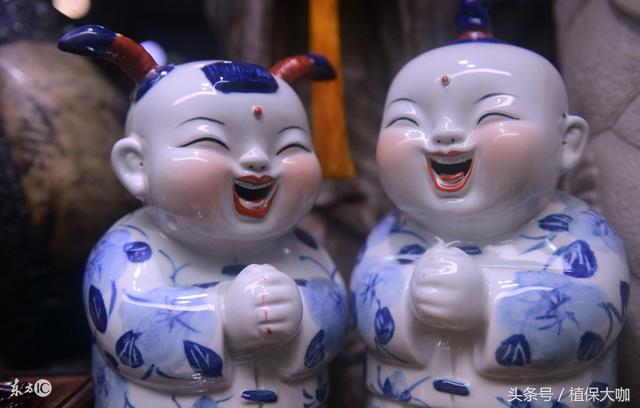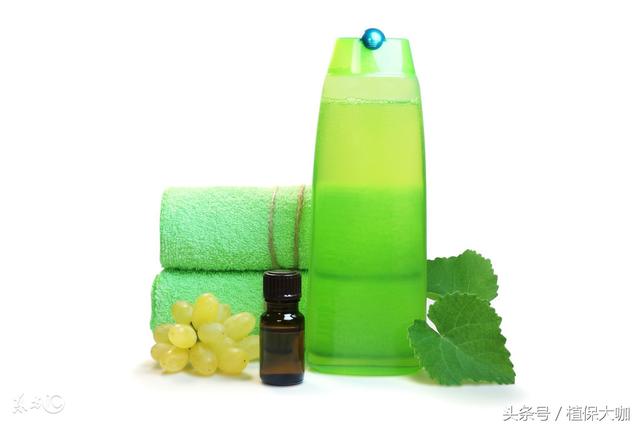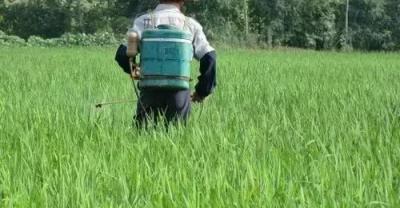Detailed explanation of pesticide formulations and the most complete comparison table of pesticide formulations are all here!
Some time ago, I was unable to update in time. I beg your pardon, thank you for your attention and support!

Pesticide dosage form
Most of the crude drugs produced by pesticide factories can not be used on crops directly without processing. Because the amount of pesticide active ingredients per hectare is very small, often only a few hundred grams, dozens of grams, or even less than 10 grams. If it is not diluted, it is impossible to spread so few pesticides evenly over such a large area, so the role of pesticides can not be brought into full play. When using pesticides, it is also required to attach to crops or insects and weeds, so some other auxiliary materials must be added to improve their wetting and adhesion properties. In addition, pesticide processing can also prolong the residual period of pesticides or process highly toxic pesticides into safe dosage forms. In short, in order to use pesticides safely, economically and effectively, raw drugs must be processed into suitable preparations. The name of a pesticide preparation usually includes three parts, namely, active ingredient content, pesticide name and dosage form, such as 2.5% deltamethrin EC, 50% Sukeling wettable powder, 2.5% chlorothalonil smoke scavenger, and so on. The dosage form is actually a morphological feature of the preparation, which mainly includes the following:
(1) Powder (Dustable powder, DP) powder is usually made by mixing raw drug and filler (or carrier) and a small amount of other auxiliaries (such as dispersant, anti-decomposing agent, etc.) to a certain fineness. The content of active ingredient in powder is usually less than 10%, which does not need dilution and direct powder spraying, and can also be used for seed dressing, preparation of poison bait or poisonous soil, etc.
(2) wettable powder (Wettable powder,WP) this is a kind of powder that is easily wetted by water and can be suspended and dispersed in water. It is usually made of raw drugs, fillers or carriers, wetting agents, dispersants and other auxiliaries by mixing and crushing to a certain fineness. Wettable powder is generally sprayed after diluting water to a certain concentration, and its active ingredient content is usually 10%-50%, and there are also varieties as high as 80%.
(3) soluble powder (Soluble powder,SP) is a powder form composed of water-soluble raw drugs, fillers, wet-spreading agents and other auxiliaries. Soluble powder can be diluted with water directly and then sprayed, and the content of active ingredients is usually more than 50%, some as high as 90%.
(4) granule (granule) is a loose granule form formed by mixing and granulation of raw drug, carrier and other auxiliaries. It is generally used for direct application, and its active ingredient content is usually 1% to 20%.
(5) Water dispersible granules (Water dispersible granule,WDG or WG) are composed of raw drugs, fillers or carriers, wetting agents, dispersants, stabilizers, adhesives and other auxiliaries. When the water dispersible granule is added to the water, the preparation quickly disintegrates and disperses to form a suspension, which is diluted to a certain concentration and sprayed, and the content of its active ingredient is usually more than 70%.
(6) Emulsifiable concentrate,EC is a homogeneous transparent solution formed by dissolving crude drugs, emulsifiers and other auxiliaries in organic solvents. Its active ingredient content is usually between 20% and 50%, but there are also varieties as low as 1% and as high as 90%. Diluted with water to form a stable milky liquid for spray use.
(7) the two dosage forms of water emulsion (Emulsion in water) and microemulsion (Microemulsion,ME) are made from insoluble raw drugs, emulsifiers, dispersants, stabilizers, antifreeze and water by homogenization process, generally without or with a small amount of organic solvents. The particle size of concentrated emulsion is mostly between 0.5 ~ 1 μ m, the appearance is milky white, and it is a thermodynamically unstable system, while the particle size of microemulsion is mostly between 0.01 ~ 0.1 μ m, and the appearance is transparent homogeneous liquid, which is a thermodynamically stable system. The effective components of water emulsions are usually between 20 and 50%, and the contents of effective components of microemulsions are usually between 5 and 50%, which are diluted to a certain concentration by adding water for spray.
(8) Water suspending agent (Aqueous suspension concentrate, SC) is a mobile form in which water-insoluble solid drugs, wetting agents, dispersants, thickeners, antifreeze agents and other auxiliaries are ground and dispersed in water. Its active ingredient content is usually about 40% to 60%, when in use, add water to dilute to a certain concentration of suspension for spray.
(9) oil solution,OS is an oil solution of pesticides, and some varieties contain co-solvents or stabilizers. The active ingredient content of the oil agent is generally 2050%, and it does not need to be diluted to spray with ultra-low capacity sprayers.
(10) smoke agent (smoke generator) smoke agent is mixed and processed into powder or cake by raw drug, fuel, combustion aid, flame retardant and so on in a certain proportion. There is no open fire after ignition, and the pesticide can be condensed into fine particles (smoke) in the air after heating and gasification.
(11) seed coating agent (Seed dressing agent) is a special dosage form formed by adding a certain amount of adhesive and film-forming agent on the basis of suspending agent, wettable powder, EC and so on. After the seed is treated with seed coating agent, a firm film is formed on the surface of the seed.
(12) sustained-release agents (controlled release formulation,CRF) can control the pesticide formulation in which the effective components of pesticides are slowly released from the formulation. Microcapsules (miocrocapsule formulation) are commonly used. Liquid or solid pesticides are coated in capsules with a particle size of 30 ~ 50 μ m. When used, pesticides are slowly released through the capsule wall to exert biological effects.
In addition, there are water agent, aerosol, smear, poison bait, paste, paste and other dosage forms.
Wettable powder-WP: when in use, you should first add a small amount of wettable powder, stir and add medicine at the same time, do not add too much medicine at one time, so as to avoid uneven mixing, pour the mother liquor into the sprayer medicine box that has been filled with half water, then fill it with water, stir evenly and spray. Soluble powder-SP: can be dissolved with water to prepare an aqueous solution for spraying. EC-EC: it is made by dissolving and mixing pesticides, solvents and emulsifiers. After entering the water, it can be dispersed into an oily homogeneous liquid pesticide form of emulsion. Water dispersible granule-WDG: the granule form of water dispersible granule can disintegrate quickly and disperse to form suspension. Dry suspension agent-DF: dry suspension agent is composed of active ingredients and many kinds of additives, which has the same characteristics and advantages as suspension agent, except that it is dry and granular, complicated in manufacture, high in cost and more convenient to use. Concentrated emulsion-stock emulsions is a preparation of liquid pesticide prepared by mixing liquid or solvent, in which tiny droplets are dispersed in water. Unlike the emulsion in which water is diluted, it is a concentrated solution of the emulsion. Concentrated suspending agent-suspensionconcentrates solid raw drug is dispersed and suspended in aqueous medium containing many kinds of auxiliaries and can flow in high depth viscous agent. The aqueous solution form of aqueous solutions pesticide is a real solution in which the agent is dispersed in water in the state of molecules or ions. The concentration of the agent depends on the water solubility of the active ingredients, and it is generally diluted with water when it is used.
The acronym of pesticide formulation is attached.
Acronym for pesticide formulation
AE
Aerosol
FSB
Suspension seed dressing agent
PA
Paste
SLX
Soluble liquid agent
AF
Water soluble powder
FSN
Suspension concentrate
PB
Bait tablet
SO
Development film oil
AS
Aqueous agent
FU
Smoke agent
PC
Window screen coating
SP
Soluble powder
AY
Aqueous solution
GA
Gas preparation
PF
Smear agent
SPX
Soluble powder
BF
Block agent
GB
Dry mixing agent
PG
Floating granule
SV
Solid-liquid mosquito repellent incense
BJ
Pencil agent
GD
Luring core
PP
Effervescent tablet
SZ
Wettable powder seed coating agent
BR
Slow-release agent
GF
Dry granule
PS
Bait cream
TA
Tablet
BS
Seed dressing agent
GG
Large granule
PT
Pill
TC
Raw drug
CC
Cockroach scent
GJ
Ointment
QJ
Ball agent
TF
Raw powder
CG
Microencapsulated granule
GR
Granule
RB
Poison bait
TK
Mother drug
CJ
Microcapsule
GS
Fat cream
RC
Mosquito repellent cream
TKD
Dripping liquid
CN
Microcapsule
GZ
Dry powder seed coating agent
RG
Bait agent
TKL
Mother liquor
CS
Microcapsule suspending agent
JG
Colloidal suspension
RJ
Glue bait
TKP
Mother powder
DC
Dispersible liquid agent
JJF
Crystal powder
RK
Mosquito repellent milk
TP
Tracking powder
DF
Dry suspending agent
JP
Soaking solution
RM
Insect repellent tablet
ULV
Ultra-low volume agent
DL
Powder granule
KK
Barrel mixture (liquid / solid)
RO
Mosquito repellent dew
VA
Electric mosquito paste
DP
Powder
KL
Barrel mixture (liquid / liquid)
RQ
Mosquito repellent
VM
Electric mosquito repellent tablets
DPC
Dust agent
KP
Bucket mixture (solid / solid)
RR
Hot aerosol
VP
Fumigant
DS
Dry seed mixing agent
KPP
Effervescent granule
RSC
Water emulsion seed coating agent
WF
Wet powder
EA
Effervescent granule
LD
Liquid agent
RT
Deworming zone
WG
Water dispersible granule
EB
Bait grain
LV
Electric mosquito repellent liquid
RW
Mosquito repellent toilet water
WJ
Dispersible granule
EC
Emulsion oil
MC
Mosquito incense
RWQ
Mosquito repellent tablet
WN
Soluble concentrated agent
EL
Electric mosquito repellent
ME
Microemulsion
SC
Suspending agent
WP
Wettable powder
ES
Seed treatment emulsion
MG
Fine granule
SD
Seed coating agent
WS
Wet seed mixing agent
ET
Electric mosquito killing paste
MP
Anti-moth agent
SE
Suspension emulsion
WT
Soluble tablet
EW
Water emulsion
MZ
Anti-moth tablet
SF
Spray agent
WTX
Soluble tablet
FG
Fine granule
NE
Concentrated emulsion
SG
Soluble granule
WZ
Water dispersible tablet
FK
Aerosol
OF
Oil suspending agent
SGX
Soluble granule
YB
Medicine pen
FP
Cigarette flake
OL
Oil agent
SKS
Water surface dispersant
YC
Fly incense
FS
Suspended seed coating agent
OP
Oil dispersible powder
SL
Soluble agent
ZC
Seed treatment agent
ZF
Seed treatment dispersible powder
English acronym for pesticide formulation
TC original drug TK mother drug DS dry seed mixing agent FS suspension seed coating agent
SD seed coating agent WS wet seed mixing agent AS water agent CS microsuspension capsule
DC dispersant EC EC ME microemulsion OL finish
SC suspension SE suspension emulsion SL soluble liquid UL ultra-low volume agent
CG microcapsule granule DF dry suspension DP powder FG fine granule
GR granules MG granules SG soluble granules SP soluble powders
WG water dispersible granule WP wettable powder WT wettable tablet MC mosquito incense
VP fumigant FU smoke agent BR sustained release agent

- Prev

If you don't know the classification of common pesticides, you will definitely suffer losses if you buy pesticides.
Pesticide is called pesticide in English, which is called "killing agent". Its general definition refers to the protection and promotion of the growth of plants and crops in agricultural production.
- Next

Do farmers spray pesticides to increase production? It's up to you to clean up the pesticide residues!
As the saying goes, "Food is the most important thing for the people." with the development of agriculture, pesticides are widely used.
Related
- Fuxing push coffee new agricultural production and marketing class: lack of small-scale processing plants
- Jujube rice field leisure farm deep ploughing Yilan for five years to create a space for organic food and play
- Nongyu Farm-A trial of organic papaya for brave women with advanced technology
- Four points for attention in the prevention and control of diseases and insect pests of edible fungi
- How to add nutrient solution to Edible Fungi
- Is there any good way to control edible fungus mites?
- Open Inoculation Technology of Edible Fungi
- Is there any clever way to use fertilizer for edible fungus in winter?
- What agents are used to kill the pathogens of edible fungi in the mushroom shed?
- Rapid drying of Edible Fungi

